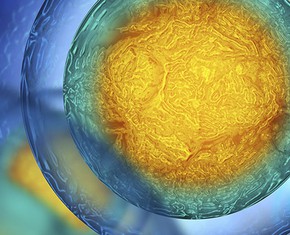The views expressed in our content reflect individual perspectives and do not represent the authoritative views of the Baha'i Faith.
Vanuatu, an archipelago of 80 volcanic islands in the South-West Pacific, is ground zero in the world’s fight against climate change.
As with other island nations, climate change is the most significant single threat to sustainable development, particularly because of the large proportion of the population living in coastal communities. Additionally, Vanuatu’s location on the Pacific Ring of Fire means that it is highly exposed to volcanic eruptions, earthquakes, tsunamis and landslides. According to the Commonwealth Vulnerability Index, Vanuatu is the most vulnerable developing country in the world.
So it is not surprising that Vanuatu was the first Pacific country to establish a Ministry of Climate Change. Nationwide efforts to include climate change and disaster risk reduction in primary and secondary education began some five years ago. In 2014, the non-government organization Vanuatu Rural Development Training Centres Association (VRDTCA) decided that a climate change course should be produced for use in some 35 rural training centers around the archipelago. Funding was made available from the German aid agency GIZ through its CCCPIR (Coping with Climate Change in the Pacific Island Region) program, and I was hired as a consultant to produce and deliver such a course.
As a Baha’i, I found this a perfect opportunity to be of service to the wider community and the planet’s fragile environment:
One of the most pressing problems of humanity in the current century is how a growing, rapidly developing, and not yet united global population can, in a just manner, live in harmony with the planet and its finite resources. Certain biological realities present themselves when an organism negatively affects or exceeds the capacity of its ecosystem. The limited availability and inequitable distribution of resources profoundly impact social relations within and between nations in many ways, even to the point of precipitating upheaval and war. And particular arrangements of human affairs can have devastating consequences for the environment. The question of the impact of climate change, and to what extent it is man-made and its effects can be ameliorated, is today a major aspect of this larger problem. The Revelation of Baha’u’llah directly and indirectly touches on a range of such concerns in a manner that speaks to a harmony between society and the natural world. It is essential, therefore, that Baha’is contribute to thought and action regarding such matters. – The Universal House of Justice, 29 November 2017, to a group of individual Baha’is.
Taking inspiration from the Baha’i teachings, the admonition of Baha’u’llah to carry forward an ever-advancing civilization, and the Baha’i sequence of Ruhi courses, I designed the climate change course materials in a way that emphasized participatory learning and promoted reflection and learning through experience. Interactions between students, and between students and communities, were to be conducted with humility, with a focus on consultation between the parties concerned. Emphasis on fostering unity and coherence was paramount, since these attributes are key factors in strengthening community resilience to hazards and climate change.
It took almost three years for this project to reach fruition. I had to produce the materials in English and then translate them into French. Two pilot courses had to be run in the outer islands to test the effectiveness of the learner guides, learner workbooks and facilitator guides. In the end, I created 56 booklets, 28 in English and 28 in French. VRDTCA was dissolved in 2015 and its functions assumed by the Ministry of Education’s TVET department. The Vanuatu Qualifications Authority had its own requirements that had to be fulfilled: this involved considerable modification to the original content, and a tortuous process towards achieving official accreditation of the course. A fresh organization had to be found to host the delivery of the program—eventually identified as the Vanuatu Institute of Technology (VIT), located in the capital city of Port Vila on Efate Island. More funding had to be negotiated through the EU-PacTVET project supported by the Pacific Community (formerly the South Pacific Commission).
But in mid-February of 2017, this first-ever certificate course in climate change and disaster risk reduction (CCDRR) finally began. I moved to Port Vila to spend the next six months there, with a couple of short breaks that enabled me to return to Western Australia. At the official opening, the Director-General of Education said how proud the government was that the Vanuatu Institute of Technology was delivering the first-ever certificate course in CCDRR, and additionally, the first-ever such course in the Pacific region.
The first cohort of 31 students came from all six provinces of Vanuatu. Twenty-seven used materials in English, and four used French, but the language of delivery was the native language of Vanuatu, Bislama. Although the course had originally been designed for students in rural areas whose education had only reached Grade 10 level, those selected from over one hundred applicants included only two at this level; the rest had finished high school education or had completed up to two years of college degree courses. This huge variation in academic level posed one challenge. Another was the age range and maturity of the participants, which varied from 18 to 40. There were 21 males and 10 females. Many students had families, and in some cases they had to deliver their children to school before they themselves could come to class. Those who came in from the islands were able to board at VIT, but the majority of the cohort were day students.
Topics covered by the course included hazard risks in Vanuatu, climate and climatic variations, causes and effects of climate change, mitigation of and adaptation to climate change, vulnerability and impacts, the importance of traditional knowledge in building community resilience, and the promotion of community action to prepare for climate change and disaster risk reduction. The basic aim was to empower the learners to become agents of change in their communities, able to conduct awareness programs and demonstrate practical techniques of mitigation and adaptation.
An integral part of the course was fieldwork—surveys in the immediate vicinity of the Institute of Technology, visits to peri-urban villages around Port Vila, longer trips further afield to communities in north-west Efate and the island of Pele, and a residential field course on the island of Emao. Students learned how to present key concepts to each other, to other students at VIT and to village communities. They did research to produce hazard risk maps, discover traditional techniques of weather prediction, food preservation and fishing, and analyze the adaptive and coping capacities of communities; established their own agro-forestry plot in the grounds of VIT and practiced how to do coral planting to replace degraded reefs; conducted scientific experiments on the heating of water and the melting of sea- and land-based ice; shared learnings on traditional knowledge with a partner from another island; prepared and shared action plans for building resilience to disasters in five communities; and took a two-day course in First Aid so as to be able to handle emergencies during hazard events.
Together, the students and I went on a remarkable journey to discover ways to live on an island as the sea rises around us and stronger storms batter us—to deal with an unprecedented global environmental crisis. In Part 2 of this essay, we’ll see what happened as a result.
















Comments
Sign in or create an account
Continue with Googleor